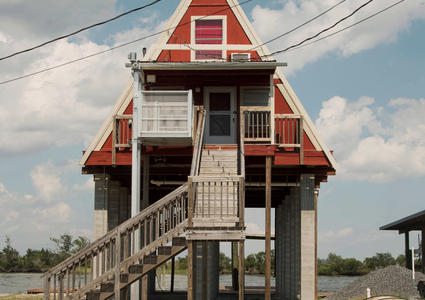In the laboratories of Libelium, a Spanish wireless communications company, a group of engineers is working against the clock, welding by hand a shipment of radiation sensors headed for Japan. Just weeks earlier in March, 2011, the Fukushima plant sounded its alarms in the aftermath of a 9.0 magnitude earthquake and a catastrophic tsunami that caused a nuclear meltdown and radiation leaks at the plant. Local food and water supplies were contaminated, and the “no-go” zone, where radiation levels were dangerously high, extended 20-kilometers away from the plant.
Libelium’s sensors make it possible to create, in just a few hours, an exact map of the radiation levels in the impacted area. Back in the lab, David Gascón, the young engineer responsible for these sensors, has ordered their emergency assembly and delivery to Fukushima as soon as possible.
“They fit in the palm of your hand and at the same time that they record data, they can send it through 3G to a cloud computing system, along with GPS information,” the TR35 winner explains. Gascón adds that this prototype was one tenth the price of other radiation monitors on the market when they were sent in aid of Japan.
This young engineer cofounded Libelium in 2006 with Alicia Asín in association with the University of Zaragoza. The company’s intelligent sensor platforms are composed of open-code software and are known for their robustness, their ability to easily incorporate tens of different sensors, and their ability to operate over long distances. They can be used for a variety of functions; anything from detecting fires or monitoring crops, to evaluating air quality, measuring water consumption, or creating parking systems that let the driver know when spaces become available.
The key module behind all of this technology is the Waspmote; an electronic component weighing only 20 grams. A group of Waspmotes with different configurations, and reinforced with different sensors, creates an intelligent network capable of transmitting information regarding any type of physical environment to a local server or the Internet. It could be a forest, mountains, or a security zone surrounding a nuclear facility.
Gascón, who considers his platforms to be “a disruptive innovation with broad uses”, sums it up by saying: “We’ve extended the limits of the network, helping create the concept of the Internet of Things.”
In the case of monitoring radiation, for example, the sensors are made up of a Waspmote central unit, a radiation sensor with a Geiger tube (that detects beta and gamma radiation), a radio transmitter with ZigBee wireless communication to maximize the life of the rechargeable lithium battery, another GPRS transmitter, and a GPS module.
Most of the time, the Waspmote system is in sleep mode to maximize the battery life, but it is programmed to activate itself in predetermined intervals. Over one minute, the sensor takes the readings from the Geiger tube and compares them to established radiation limits. This makes the sensor useful for preventative ends—it could operate for years from the same location powered by fitted solar panels—as well as emergency situations in which an operator would only have to enter the desired monitoring area once, and could avoid repeated radiation exposure.
This past February, Libelium announced a new Wi-Fi module for Wapsmote that allows it to collect data and send it to any web server connected to the cloud, or to any iPhone or Android device nearby, just by using HTTP protocol. This step, which provides information to the sensors and makes it possible for them to communicate with cloud technology, for Gascón, is “[his] major accomplishment” in the field of technology.
Libelium employs 30 people and closed 2011 with €1.5 million in revenues. Among its clients are systems companies, universities, and engineering and consulting firms like IBM, Vodafone, Telefónica, and Boeing. More than 2000 developers and researchers use the Wapsmote platform across the globe.
It is no surprise then, that this technology has expanded to more than 45 countries. In northern Spain, 90 Waspmotes were distributed across 200 hectares of forest in Asturias and Galicia in 2010, where they served as fire prevention tools. They measure the temperature and the humidity, and detect the presence of gases associated with combustion. That same year, these sensors invented by the TR35 winner were selected by Project SmartSantander to set in motion a system detecting open parking spaces, as well as to measure and control noise and air pollution in Cantabria’s capital. “There are already 1000 Waspmotes installed that have converted this city into a smart one connected to the Internet,” Gascón explains.
Another creation by the TR35 winner is a multiprotocol router called ‘Meshlium’, capable of interconnecting up to six technologies (WSN, Wi-Fi, GPRS, Bluetooth, GPS, and Ethernet). It works in tandem to connect the Waspmotes to the space where the data is stored.
John Janas, president of Janas International Enterprises and a member of the TR35 Spain Awards’ jury, highlights Gascón’s willingness to boost the “interchange of ideas to promote greater understanding and more efficient products.” Janas also commends Gascón’s work for its impact on “measuring climate change as well as regional environmental problems.” - Translated by Julia Barrero


